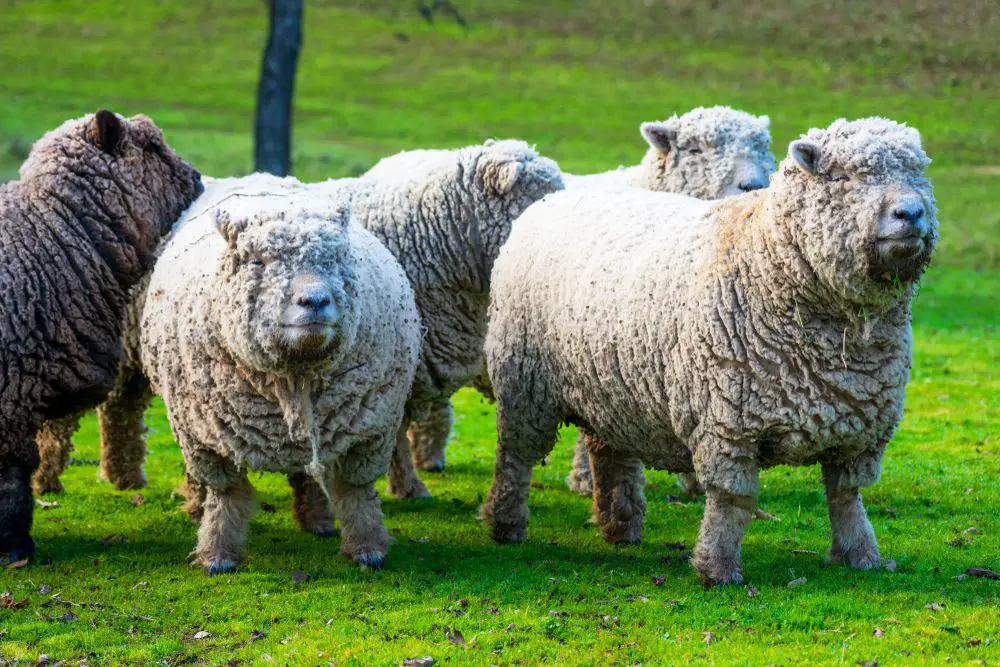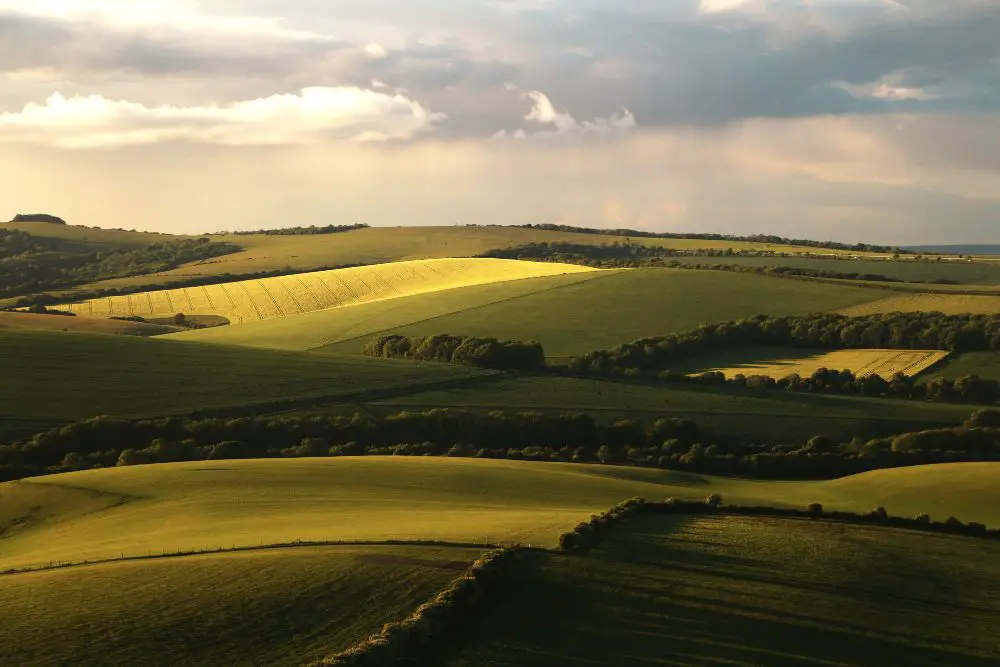Southdown sheep are an older British breed of sheep that became especially popular in the early 1800’s but are still relevant today as a dual-purpose sheep breed. Southdown sheep are ideal for those seeking a medium-sized, white domestic sheep who does well in rainy climates.
This article covers the history of this English sheep, their breed characteristics, and examines the quality and type of their wool in detail, to help you decide if this breed is right for your farm.
Table of Contents
Where Does The Southdown Sheep Come From?
Southdown sheep are one of the oldest and most influential breeds of sheep originally from Sussex, England. Throughout most of their history, this breed was considered a heritage breed, one that had naturally evolved.
Southdown sheep were first improved upon by John Ellman who saw the potential of a breeding program for them in the 1780’s.
Just as the Leicester breed was used as a starting point for cross-breeding other sheep for their production qualities, so too was the Southdown sheep used to improve the lineage of other breeds. Some notable crosses included the Shropshire, Cotswold, Hampshire and Suffolk.
Founded in 1890, the Southdown Sheep Society put forth breed standards and handled the registration of Southdown Sheep in the United Kingdom.
In 1803, these sheep were first imported to the United States and today, the American Southdown Breeders Association registers American Southdown sheep.
The American Southdown differs from the Southdown sheep of the U.K. because it has been crossbred with the New Zealand Southdown sheep and is larger.
Southdown Sheep Breed Characteristics
According to the Livestock Conservancy, the Southdown sheep is “distinctive in appearance”. Both Southdown rams and ewes are polled and are one of the rare breeds of white sheep with a mouse-colored face.
| Characteristics | Description |
| Origin | Sussex, England |
| Appearance | Purebred Southdown sheep should have good conformation and be well-proportioned. Their heads should be carried upright and the hair on their muzzle should be light grey to brown. Hooves should be black and they should have dense, well-proportioned fleece over most of their body. |
| Wool | Micron range from 23 to 29 USDA wool grade is between 54’s to 60’s Staple length between 2 and 3 inches Grease fleece weight ranges between 2 to 5 pounds |
| Weight | Rams weight 225lbs to 250lbs Ewes weight 160lbs to 200lbs |
| Fertility | Average |
| Meat | Flavorsome and distinctive |
| Environment | Highly resilient. Does best in cooler climates. |
| Common Uses | Dual-purpose – meat and wool production |

Purebred Southdown sheep should have good conformation and be well-proportioned. Their heads should be carried upright and the hair on their muzzle should be light grey to brown.
What Kind Of Fleece Does Southdown Sheep Produce?
The Southdown breed produces dense, white, medium wool.
Southdown sheep should be shorn 2 to 3 times per year as wool grows quickly over most of their body.
Why Should I Raise Southdown Sheep?
There are many reasons why you should consider raising Southdown Sheep on your sheep farm:
- Good breed for meat production and the meat is flavorful and distinctive
- Southdown sheep will live for 10 to 14 years with proper care
- Known for their hardiness
- These sheep have quick growth and feed conversion
- They don’t require as much land as other breeds
- They are a healthy breed overall
- Southdown sheep have docile personalities and are easy to handle
- Highly active sheep that is naturally curious and energetic
- Good sheep breed for beginners and youth programs

